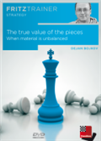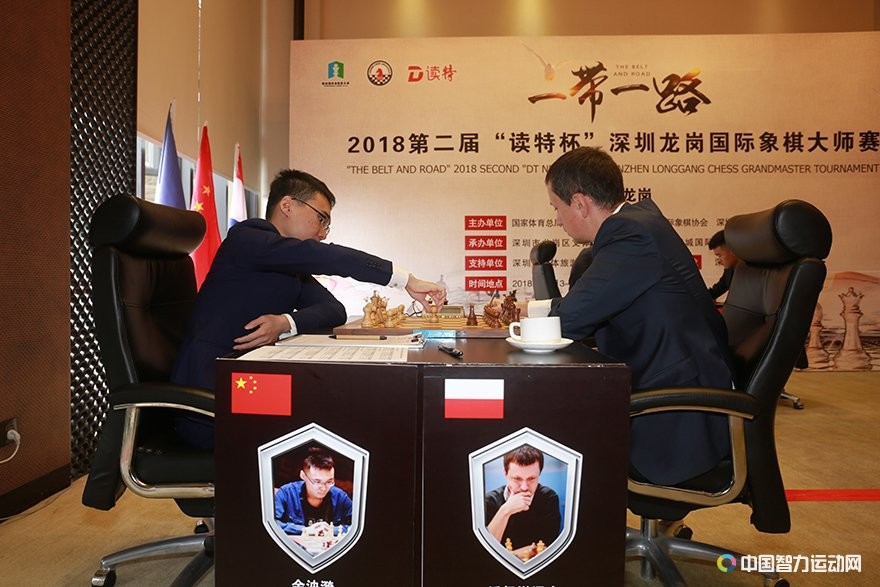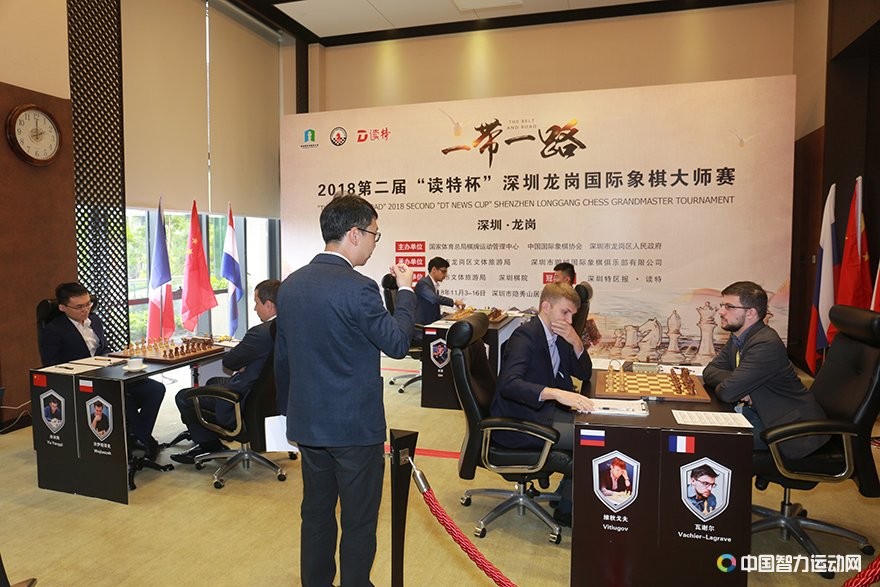A nice mix
Given the quick rise of very young players to the elite in the computer era, having a tournament with players aged between 24 and 31 already seems slightly like an old classic. Someone like Giri, who is barely 24 years-old, has been in the spotlight for so long that having him as second seed is not a small feat for any event. Perhaps the only apparent "rising star" is Yu Yangyi, who is also 24 (and 12th in the live ratings list!), but has not participated in as many elite closed tournaments.
The (even) older generation is represented by Nikita Vitiugov and Radoslaw Wojtaszek — both 31 years-old — while Ding Liren (26) and Maxime Vachier-Lagrave (28) are the other top-10 players — besides Giri — who complete a highly attractive line-up.
China has been particularly proactive in organising events like this, in addition to matches that include strong Western players, especially from Russia, which often get little promotion internationally. Let us not forget that a certain Magnus Carlsen had one of his best-ever performances in the 2010 Pearl Spring Tournament in Nanjing when he was only 19-years-old.

The opening ceremony featured a traditional Chinese style | Photo: Official site
The drawing of lots created a very interesting pairing for the first round, as the two top-seeds faced each other. Anish Giri had the white pieces against the apparently unbeatable Ding Liren. In a complex Ruy Lopez middlegame, the players kept the balance both materially and dynamically, until Giri gave up a pawn to get chances against Ding's slightly less-coordinated pieces:
Anish, with white, handed over his h-pawn and is now attacking the bishop. At this point, his opponent found the move suggested by the computer, 26...d5 — if White takes the bishop there follows 27.Qxh4 dxe4 and, for example, 28.Kg3 cxd3 29.cxd3, when Black's passed pawn compensates for the missing pieces. Instead of capturing on h4, Giri followed with the correct 27.e5. White was a pawn down, but Black's structure was faulty, so the players did not take long to find a repetition in a dynamically equal position:
 There are many cases of material imbalance in chess. In this video series, GM Dejan Bojkov of Bulgaria makes an attempt to systematise the most important ones and gives valuable advice on how to handle the resulting positions.
There are many cases of material imbalance in chess. In this video series, GM Dejan Bojkov of Bulgaria makes an attempt to systematise the most important ones and gives valuable advice on how to handle the resulting positions.
The three-fold repetition was achieved by 36.Ng5+ Ke7 37.Nf3 Kf7, and so on. Therefore, Ding Liren continued with his astounding undefeated streak — he has played 95 classical games without suffering a single loss, equalling the streak of Mikhail Tal! Will he get to a hundred in Shenzhen?
 On this DVD Dorian Rogozenco, Mihail Marin, Oliver Reeh and Karsten Müller present the 8. World Chess Champion in video lessons: his openings, his understanding of chess strategy, his artful endgame play, and finally his immortal combinations.
On this DVD Dorian Rogozenco, Mihail Marin, Oliver Reeh and Karsten Müller present the 8. World Chess Champion in video lessons: his openings, his understanding of chess strategy, his artful endgame play, and finally his immortal combinations.
Top seeds Anish Giri and Ding Liren drew their first round game | Photo: Official site
While Ding Liren showed his class against Giri, China's second highest-rated player Yu Yangyi faced the opening expert from Poland, Radoslaw Wojtaszek. The latter arrived in China after getting one of the best results of his career at the Isle of Man Tournament, where he not only got first place in the play-offs but also recovered his spot as the strongest Polish chess player. Radoslaw played a strange move in the opening:
8...e5 had been played for the last time in a classical game in 1992, and by non-elite players. Yu Yangyi closed the centre with 9.d5 and the players started to take longer thinks in unknown territory (naturally, Yu Yangyi spent more time than his opponent). A manoeuvring struggle followed, with the players shuffling their pieces in preparation for a potential break:
 In chess, the technique of exchanging pieces is the ultimate knowledge. The biggest specialists of this were such greats as Akiba Rubinstein and Vasily Smyslov. The exchange bishop for knight is the most common case. The technique of exploiting the individual power of these pieces is completely different.
In chess, the technique of exchanging pieces is the ultimate knowledge. The biggest specialists of this were such greats as Akiba Rubinstein and Vasily Smyslov. The exchange bishop for knight is the most common case. The technique of exploiting the individual power of these pieces is completely different.
Here, the Chinese went for 19.f4, which turned out to be the last pawn break in the game. The queens were exchanged on move 26, when Black seemed to be more comfortable with a knight against bishop in a closed position. Yu Yangyi, however, quickly found effective resources to keep the balance:
Instead of defending the e-pawn passively, the Chinese took advantage of the pin against the king and played 28.Rb5. The players quickly realised that pushing for more would only ruin their positions and exchanged down into a drawn king-and-pawns endgame.

The tables used in the event include pictures of the players on the sides | Photo: Official site
In the quickest game of the round, Maxime Vachier-Lagrave neutralised Nikita Vitiugov in 30 moves to start the tournament solidly with the black pieces. We will see if the Frenchman does the same tomorrow, when he will have Black again against rating favourite Ding Liren.
 On this DVD a team of experts looks closely at the secrets of Karpov's games. In more than 7 hours of video, the authors examine four essential aspects of Karpov's superb play.
On this DVD a team of experts looks closely at the secrets of Karpov's games. In more than 7 hours of video, the authors examine four essential aspects of Karpov's superb play.
It is 2:00 (as shown on the clock on the left) and the round is about to begin | Photo: Official site
All games from Round 1
Links



























